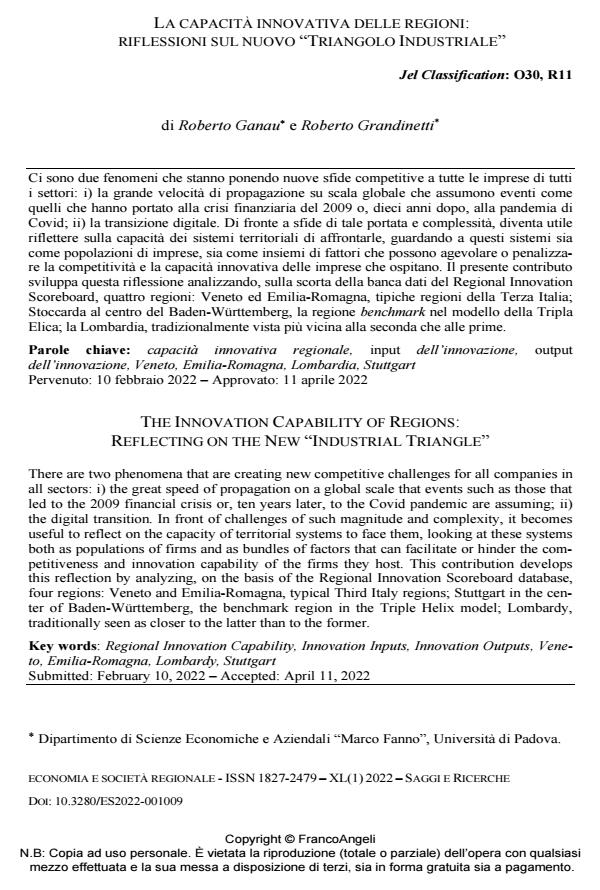The innovation capability of regions: reflecting on the new "industrial triangle"
Journal title ECONOMIA E SOCIETÀ REGIONALE
Author/s Roberto Ganau, Roberto Grandinetti
Publishing Year 2022 Issue 2022/1
Language Italian Pages 21 P. 105-125 File size 347 KB
DOI 10.3280/ES2022-001009
DOI is like a bar code for intellectual property: to have more infomation
click here
Below, you can see the article first page
If you want to buy this article in PDF format, you can do it, following the instructions to buy download credits

FrancoAngeli is member of Publishers International Linking Association, Inc (PILA), a not-for-profit association which run the CrossRef service enabling links to and from online scholarly content.
There are two phenomena that are creating new competitive challenges for all companies in all sectors: i) the great speed of propagation on a global scale that events such as those that led to the 2009 financial crisis or, ten years later, to the Covid pandemic are assuming; ii) the digital transition. In front of challenges of such magnitude and complexity, it becomes useful to reflect on the capacity of territorial systems to face them, looking at these systems both as populations of firms and as bundles of factors that can facilitate or hinder the competitiveness and innovation capability of the firms they host. This contribution develops this reflection by analyzing, on the basis of the Regional Innovation Scoreboard database, four regions: Veneto and Emilia-Romagna, typical Third Italy regions; Stuttgart in the center of Baden-Württemberg, the benchmark region in the Triple Helix model; Lombardy, traditionally seen as closer to the latter than to the former.
Keywords: Regional Innovation Capability, Innovation Inputs, Innovation Outputs, Veneto, Emilia-Romagna, Lombardy, Stuttgart
Jel codes: O30, R11
Roberto Ganau, Roberto Grandinetti, La capacità innovativa delle regioni: riflessioni sul nuovo "triangolo industriale" in "ECONOMIA E SOCIETÀ REGIONALE " 1/2022, pp 105-125, DOI: 10.3280/ES2022-001009